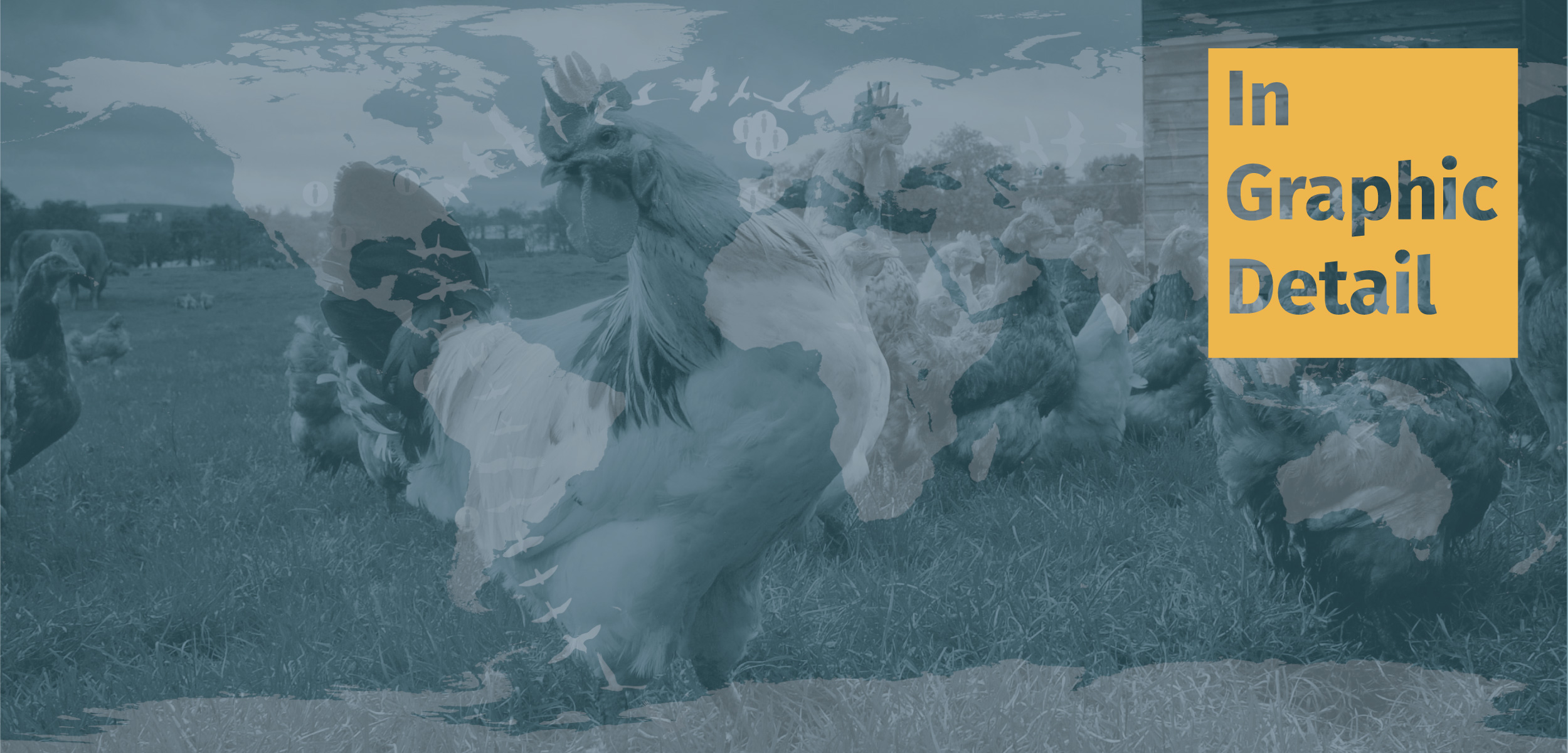In Graphic Detail: Avian Flu around the World
Now that it’s spread rapidly around the globe and jumped to animals such as foxes, sea lions, and cows, scientists worry that the avian flu could spill over to humans.
Article body copy
On May 22, 2024, a Michigan farmworker was stricken with conjunctivitis, or eye redness, a common symptom caused by bacterial or viral infections. But this case was unique: an avian influenza virus caused the condition. That was the third-known human infection of bird flu in the United States and the second time cows were responsible for its spread. While the latest highly virulent strain of avian flu has ricocheted around the world since 2020, livestock-to-human infection is a worrisome development.
Different subtypes of bird flu have been around for decades but, historically, outbreaks haven’t reached pandemic proportions. But everything changed in 2020. That year, scientists identified a new, highly infectious strain of bird flu in wild birds in Europe; it was the result of gene swapping between virus strains in poultry and wild birds.
In 2021, this new strain, scientifically known as highly pathogenic avian influenza H5N1 clade 2.3.4.4b, spread through Eurasia and Africa. By the end of that year, the same virus popped up in domestic birds in Newfoundland and Labrador, Canada, likely carried across the Atlantic by seabirds migrating from Europe. The disease then spread south to the United States. Around the same time, this strain also became the predominant cause of avian flu outbreaks at poultry farms around the globe. Worldwide, millions of wild birds have likely died—seabirds were probably hit hardest. Surveys in the United Kingdom, for example, suggest that the virus has killed 25 percent of the country’s gannets and more than 75 percent of its great skuas.
First detected in 2020, clade 2.3.4.4b of avian flu was rapidly transmitted around the world. So far, 16 people have contracted the disease from animals. Infographic by Marina Wang and Mark Garrison
Unlike previous bird flu outbreaks, this pandemic has persisted for four years—even through typically flu-free summers. The strain is also now circulating widely in Europe, Africa, and the Americas, where bird flu has not been endemic.
Another unusual feature of this bird flu pandemic has been its impact on mammals. This clade of H5N1 has infected foxes, sea lions, and even a polar bear. And the news has gotten even more grim: in February 2024, the virus reached mainland Antarctica and began tearing through the dense penguin colonies there. A month later, scientists found the virus spreading through dairy cow herds in the United States, and in April, virus fragments showed up in milk.
It’s unclear what risk—if any—infected livestock pose for human health. So far, clade 2.3.4.4b has been found in 16 people who had close contact with infected poultry or cattle. The US Centers for Disease Control and Prevention reports that the risk of human infection is low. But scientists worry that each time the virus infects a new type of carrier—particularly pigs, which host all kinds of flu strains—it has another opportunity to morph into a disease that will spread from human to human.

